
BARON GAUTSCH
DEPTH: 37 - 41 m
SKILL: Advanced
Baron Gautsch; passenger steamship; Austro-Hungary, Österreichischer Lloyd Company
Sunk: 13th August 1914 (underwater mine)
Dimensions: l=84.5 m, w=11.64 m
Coordinates: 44.94062° N, 13.57872° E
Location: W of the Brijuni Islands
Access: 2/5 access is solely by boat (the location is in the open sea)
Visibility: 3/5 weaker in summer, but in winter considerably better
Current: 3/5 mostly weak, but due to the open sea occasionally moderate to strong
Flora and fauna: 4/5 varied life on and around the wreck, occasionally specimens of large fish
HISTORY:
The luxury passenger steamship Baron Gautsch was launched in 1908 in the British shipyard Gourlays & Sons in Dundee. It was the pride of the Austrian Lloyd’s passenger fleet. Until the beginning of the First World War it had sailed on the coastal route connecting Kotor and Trieste. After the outbreak of the war, on 27th June 1914, the ship was leased to the navy and had made four journeys carrying military reinforcements from Trieste to Kotor. It covered 1,800 nautical miles and on that occasion transported 2,855 people.
In the morning hours of 13th August 1914, the Baron Gautsch was returning from the direction of Dalmatia. That morning, after having boarded passengers on Rab and Mali Lošinj, it sailed the shortest route to Trieste. The waters around the Brijuni Islands were unusually busy that day. The Austro-Hungarian Navy minelayer Basilisk was laying a row of mines, building a minefield for the protection of entrance to military port of Pula. About 1400 hrs. the Baron Gautsch found itself close to Cape Kamenjak, sailing along on a course much closer to the coast than was directed by the military authorities. This course led it directly into the minefield.
On the deck of the Basilisk, whose sailors were dropping large anchored mines into the sea at regular intervals from the stern, they noticed in the distance the beautiful passenger ship which was approaching them at high speed from faraway sailing towards the north. However it soon became clear to everyone that the ship was sailing directly towards the mine barriers which they had just laid and that only rapid change of course could save it from hitting the mines. The sharp sound of the steam whistle from the Basilisk cut through the air, and warning signal flags began to wave on the mast. However on the Baron Gautsch it seemed that these warnings were not understood or maybe they did not notice them, because the ship did not reduce its speed and continued to sail in the same direction. On its deck many passengers were clearly distinguishable who curiously watched the warship. Everyone on the Basilisk was petrified with horror, watching helplessly as the passenger ship passed through their mine barriers.
Suddenly along the port side a dark column of water shot up into the air which covered the entire ship. When the smoke from the explosion had dispersed, it was clear that the Baron Gautsch was sailing slower and was rapidly listing to the left. On the deck panic broke amongst the passengers, whilst the crew tried to lower the lifeboats. From the Basilisk a motor launch was sent towards the disaster site, from about three nautical miles away. Just a few minutes after the explosion the bow of the Baron Gautsch rose into the air, and then the beautiful steamship disappeared forever under the surface. Survivors were swimming in the sea covered with a thick layer of crude oil struggling for their lives. Many of them died because of the oil which they swallowed whilst they struggled to stay on the surface. Although help was close by, it did not arrive in time. The crews of the Basilisk and the destroyers Triglav, Csepel and Balaton managed to save in total 159 people, whilst 177 died in the shipwreck.
Second Officer Tenze drowned with the ship, whilst Commander Paul Winter and First Officer Luppis were arrested and imprisoned in Pula. It was only after the war that the resolution to the requests of damages was continued. Unfortunately, during unrests in June 1925 the Palace of Justice in Vienna was set alight, in which all the documentation was burnt. With this the main part of the documentation regarding the greatest Austro-Hungarian civil naval tragedy in the 20th century was lost.
WRECK CONDITION AND DIVING:
The ship lies in an upright position (on its keel) on a sandy bottom at a depth of 40 metres.
The highest and shallowest part of the ship is the upper deck, because almost nothing remains of the wooden bridge. The hull is well-preserved, and in the middle of the left side of the ship at the height of the waterline gapes a 2 x 2 metre sized hole which was caused by the explosion of the mine. On the bow of the ship is an anchor windlass, and both anchors are in place. The ships superstructure is also accessible even to less experienced divers. Since the wooden parts of the deck are mostly rotten, daylight enables good visibility of the upper decks and areas where the saloons and passenger dining rooms were. The lifeboat davits on the left side of the ship are today twisted towards the side, indicating the struggle of the crew and passengers to abandon the sinking ship.
In the surroundings of the ship various species of fish can be encountered, from large shoals of smaller fish to large specimens of tuna. In the interior there can also be often found large conger eels.
Visibility of the wreck in the summer months is mainly about 8-10 metres, and occasionally it is also quite less, which is characteristic in this part of the Adriatic. Therefore caution is necessary when diving, especially if you move away from the ship. Nevertheless, in recent times it has happened that the visibility of the wreck has been extraordinary, and at those times from the surface even the upper parts of the ship are visible. This period lasts for several days and happens without reason, even in the summer months when visibility is usually weaker. Visibility in the interior of the ship is typically better due to weaker sea currents, but caution is needed moving above the decks and through spaces which are always covered with layers of fine mud which is easily stirred-up.
Note: Since the location of the wreck is 7 nautical miles from the nearest coast, this is diving in the open sea. The waves can be large and complicate entry, and especially exit from the sea. The position in which the wreck lies can be found by using satellite navigation equipment (GPS), but it is important to note that the wreck of the Baron Gautsch is protected by law, which means that diving is only allowed by means of an authorised diving centre. Any found items must be left in their place and the diving leader from the authorising diving centre should be informed.
The description and illustrations are a courtesy of Danijel Frka and Jasen Mesić. Buy the whole book here: https://shop.naklada-val.hr/product_info.php?products_id=561
Sunk: 13th August 1914 (underwater mine)
Dimensions: l=84.5 m, w=11.64 m
Coordinates: 44.94062° N, 13.57872° E
Location: W of the Brijuni Islands
Access: 2/5 access is solely by boat (the location is in the open sea)
Visibility: 3/5 weaker in summer, but in winter considerably better
Current: 3/5 mostly weak, but due to the open sea occasionally moderate to strong
Flora and fauna: 4/5 varied life on and around the wreck, occasionally specimens of large fish
HISTORY:
The luxury passenger steamship Baron Gautsch was launched in 1908 in the British shipyard Gourlays & Sons in Dundee. It was the pride of the Austrian Lloyd’s passenger fleet. Until the beginning of the First World War it had sailed on the coastal route connecting Kotor and Trieste. After the outbreak of the war, on 27th June 1914, the ship was leased to the navy and had made four journeys carrying military reinforcements from Trieste to Kotor. It covered 1,800 nautical miles and on that occasion transported 2,855 people.
In the morning hours of 13th August 1914, the Baron Gautsch was returning from the direction of Dalmatia. That morning, after having boarded passengers on Rab and Mali Lošinj, it sailed the shortest route to Trieste. The waters around the Brijuni Islands were unusually busy that day. The Austro-Hungarian Navy minelayer Basilisk was laying a row of mines, building a minefield for the protection of entrance to military port of Pula. About 1400 hrs. the Baron Gautsch found itself close to Cape Kamenjak, sailing along on a course much closer to the coast than was directed by the military authorities. This course led it directly into the minefield.
On the deck of the Basilisk, whose sailors were dropping large anchored mines into the sea at regular intervals from the stern, they noticed in the distance the beautiful passenger ship which was approaching them at high speed from faraway sailing towards the north. However it soon became clear to everyone that the ship was sailing directly towards the mine barriers which they had just laid and that only rapid change of course could save it from hitting the mines. The sharp sound of the steam whistle from the Basilisk cut through the air, and warning signal flags began to wave on the mast. However on the Baron Gautsch it seemed that these warnings were not understood or maybe they did not notice them, because the ship did not reduce its speed and continued to sail in the same direction. On its deck many passengers were clearly distinguishable who curiously watched the warship. Everyone on the Basilisk was petrified with horror, watching helplessly as the passenger ship passed through their mine barriers.
Suddenly along the port side a dark column of water shot up into the air which covered the entire ship. When the smoke from the explosion had dispersed, it was clear that the Baron Gautsch was sailing slower and was rapidly listing to the left. On the deck panic broke amongst the passengers, whilst the crew tried to lower the lifeboats. From the Basilisk a motor launch was sent towards the disaster site, from about three nautical miles away. Just a few minutes after the explosion the bow of the Baron Gautsch rose into the air, and then the beautiful steamship disappeared forever under the surface. Survivors were swimming in the sea covered with a thick layer of crude oil struggling for their lives. Many of them died because of the oil which they swallowed whilst they struggled to stay on the surface. Although help was close by, it did not arrive in time. The crews of the Basilisk and the destroyers Triglav, Csepel and Balaton managed to save in total 159 people, whilst 177 died in the shipwreck.
Second Officer Tenze drowned with the ship, whilst Commander Paul Winter and First Officer Luppis were arrested and imprisoned in Pula. It was only after the war that the resolution to the requests of damages was continued. Unfortunately, during unrests in June 1925 the Palace of Justice in Vienna was set alight, in which all the documentation was burnt. With this the main part of the documentation regarding the greatest Austro-Hungarian civil naval tragedy in the 20th century was lost.
WRECK CONDITION AND DIVING:
The ship lies in an upright position (on its keel) on a sandy bottom at a depth of 40 metres.
The highest and shallowest part of the ship is the upper deck, because almost nothing remains of the wooden bridge. The hull is well-preserved, and in the middle of the left side of the ship at the height of the waterline gapes a 2 x 2 metre sized hole which was caused by the explosion of the mine. On the bow of the ship is an anchor windlass, and both anchors are in place. The ships superstructure is also accessible even to less experienced divers. Since the wooden parts of the deck are mostly rotten, daylight enables good visibility of the upper decks and areas where the saloons and passenger dining rooms were. The lifeboat davits on the left side of the ship are today twisted towards the side, indicating the struggle of the crew and passengers to abandon the sinking ship.
In the surroundings of the ship various species of fish can be encountered, from large shoals of smaller fish to large specimens of tuna. In the interior there can also be often found large conger eels.
Visibility of the wreck in the summer months is mainly about 8-10 metres, and occasionally it is also quite less, which is characteristic in this part of the Adriatic. Therefore caution is necessary when diving, especially if you move away from the ship. Nevertheless, in recent times it has happened that the visibility of the wreck has been extraordinary, and at those times from the surface even the upper parts of the ship are visible. This period lasts for several days and happens without reason, even in the summer months when visibility is usually weaker. Visibility in the interior of the ship is typically better due to weaker sea currents, but caution is needed moving above the decks and through spaces which are always covered with layers of fine mud which is easily stirred-up.
Note: Since the location of the wreck is 7 nautical miles from the nearest coast, this is diving in the open sea. The waves can be large and complicate entry, and especially exit from the sea. The position in which the wreck lies can be found by using satellite navigation equipment (GPS), but it is important to note that the wreck of the Baron Gautsch is protected by law, which means that diving is only allowed by means of an authorised diving centre. Any found items must be left in their place and the diving leader from the authorising diving centre should be informed.
The description and illustrations are a courtesy of Danijel Frka and Jasen Mesić. Buy the whole book here: https://shop.naklada-val.hr/product_info.php?products_id=561

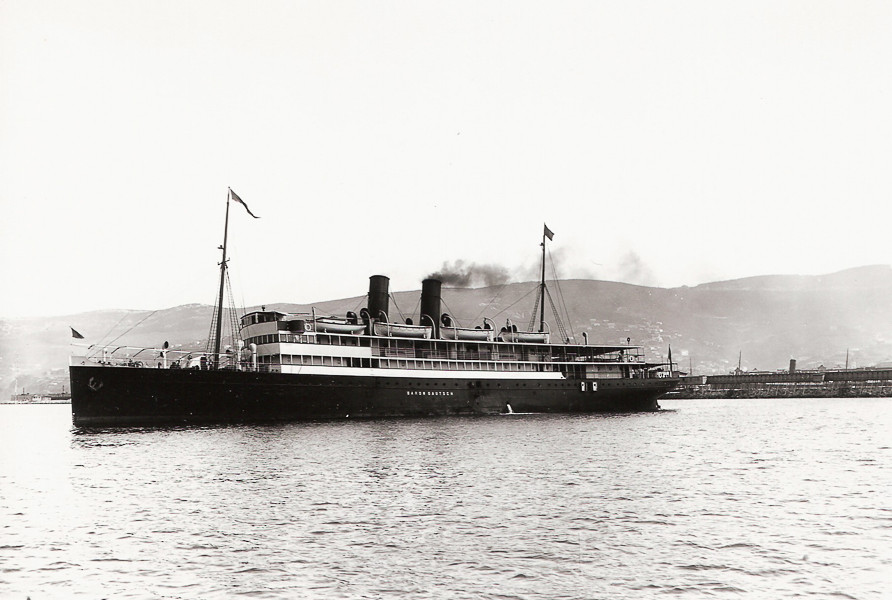
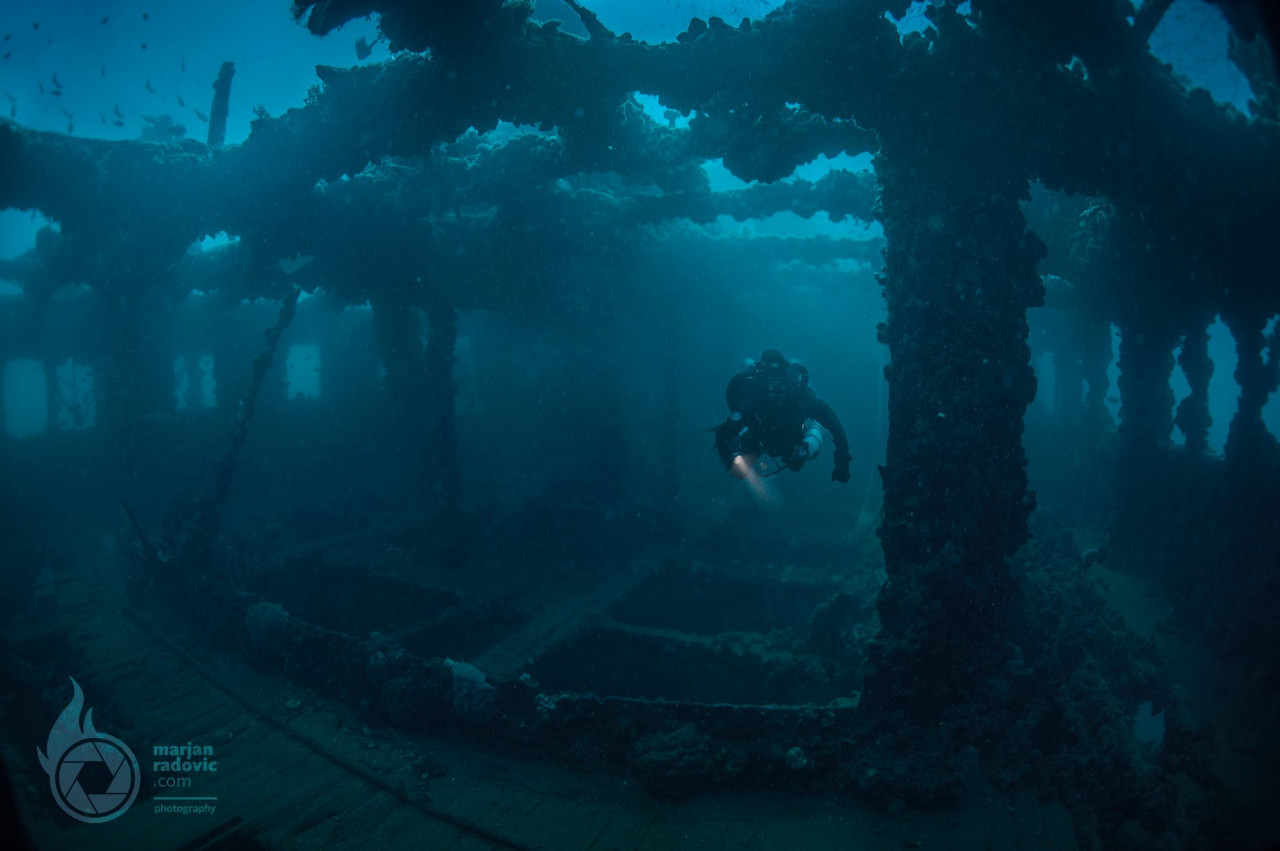
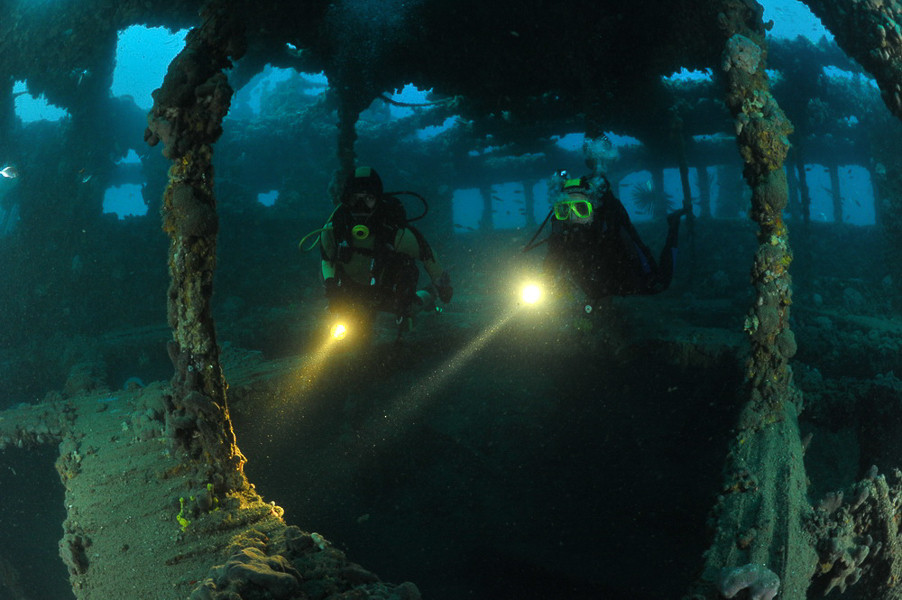
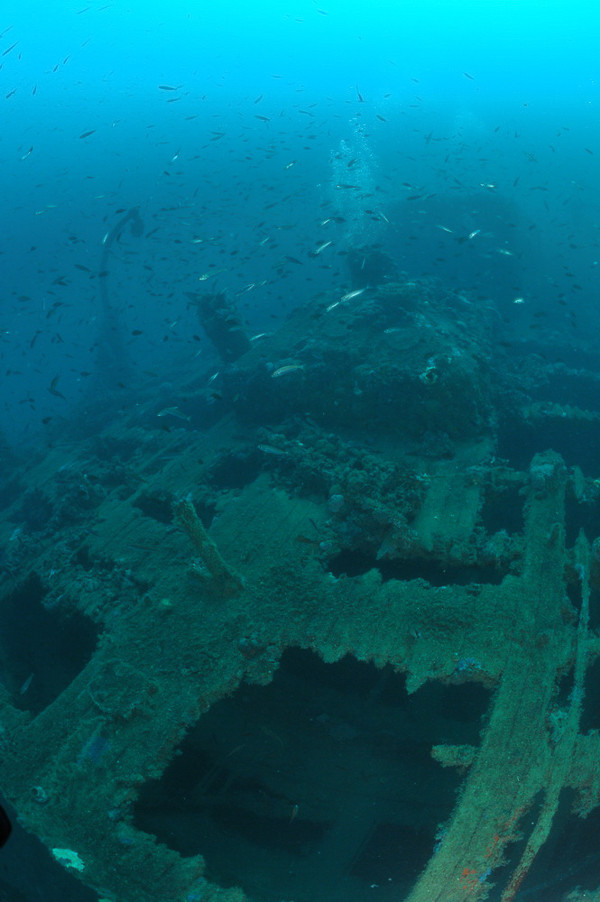
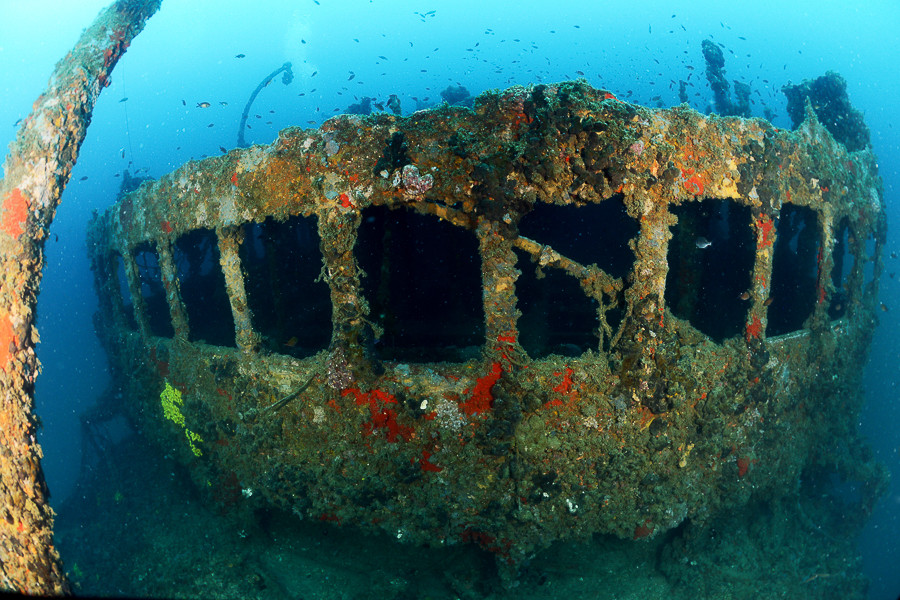
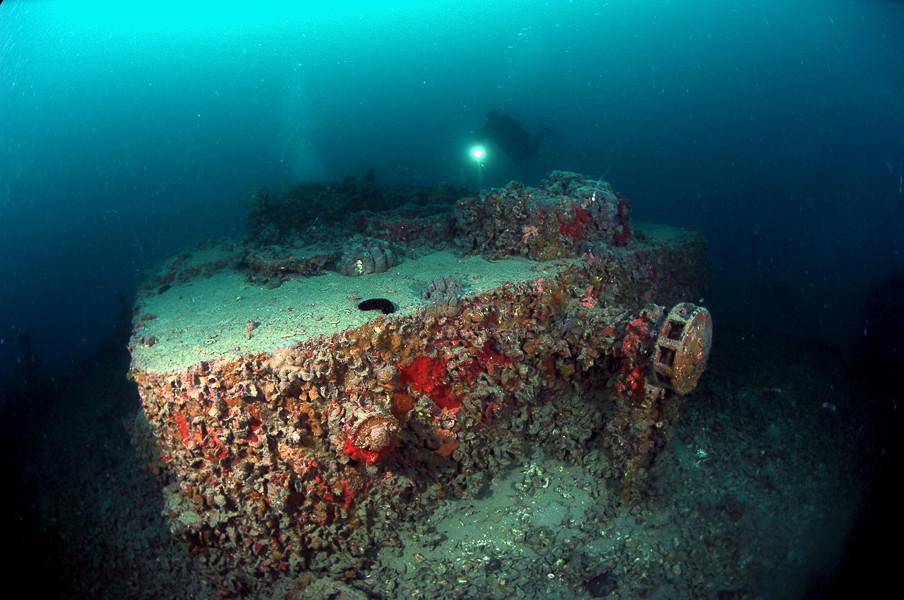
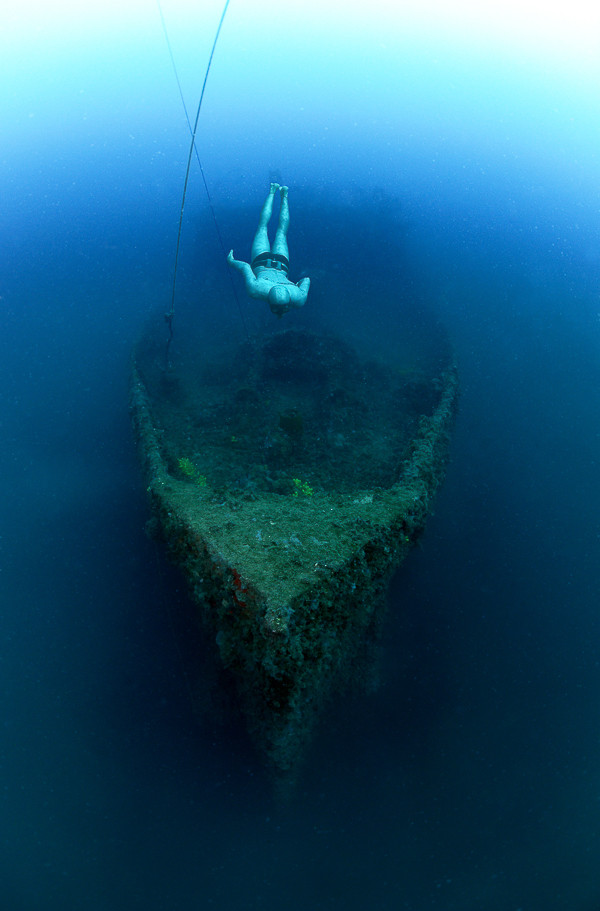
 The investment is co-financed by the Republic of Slovenia and the European Union from the European Regional Development Fund.
The investment is co-financed by the Republic of Slovenia and the European Union from the European Regional Development Fund.  H2O Globe BETA
H2O Globe BETA